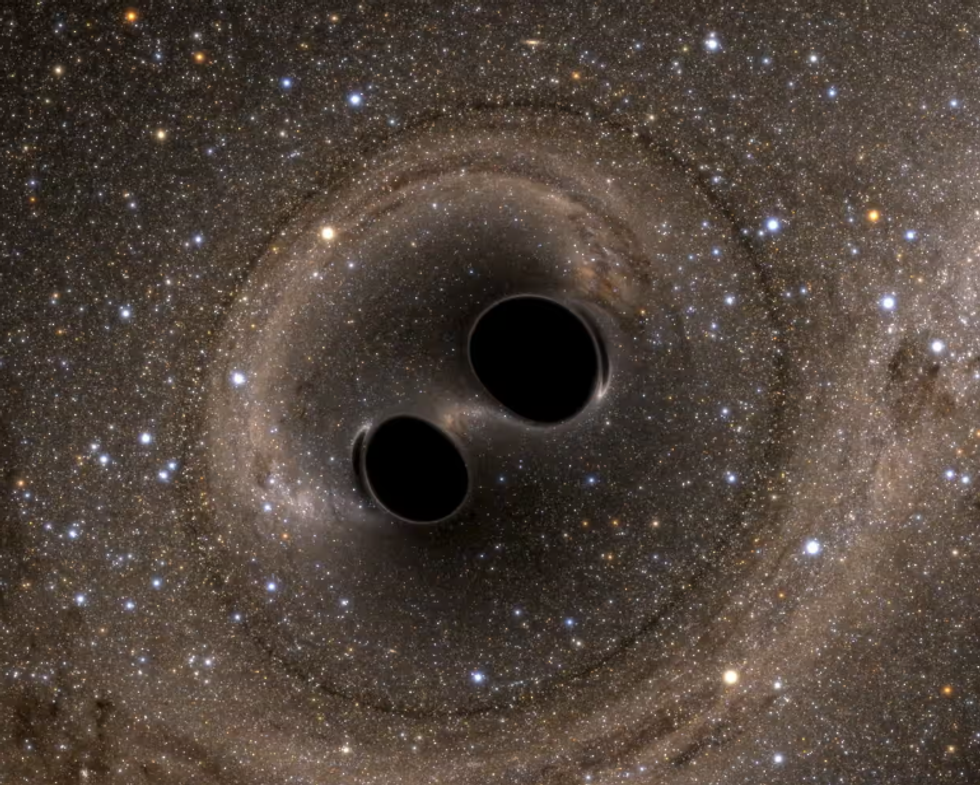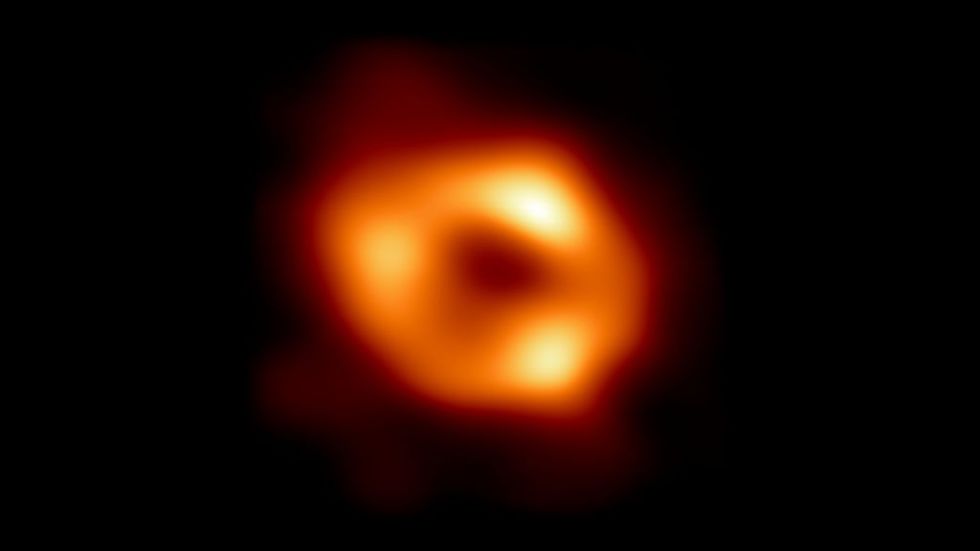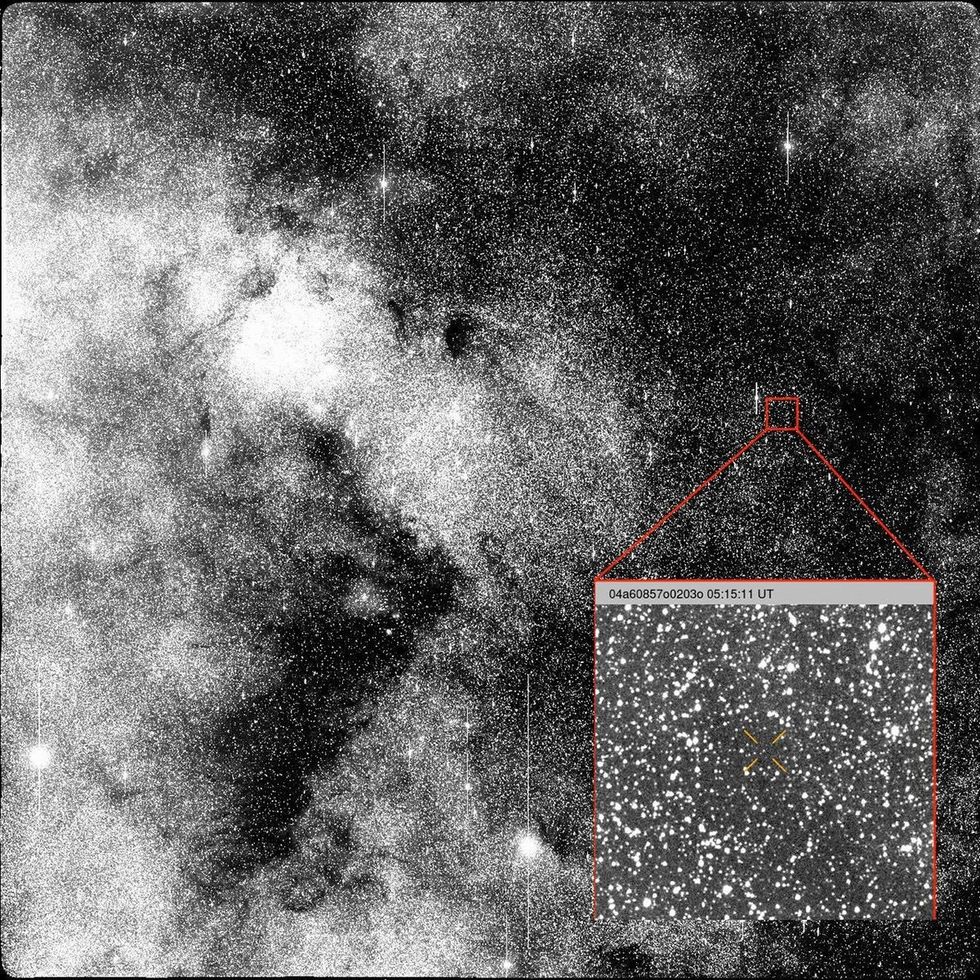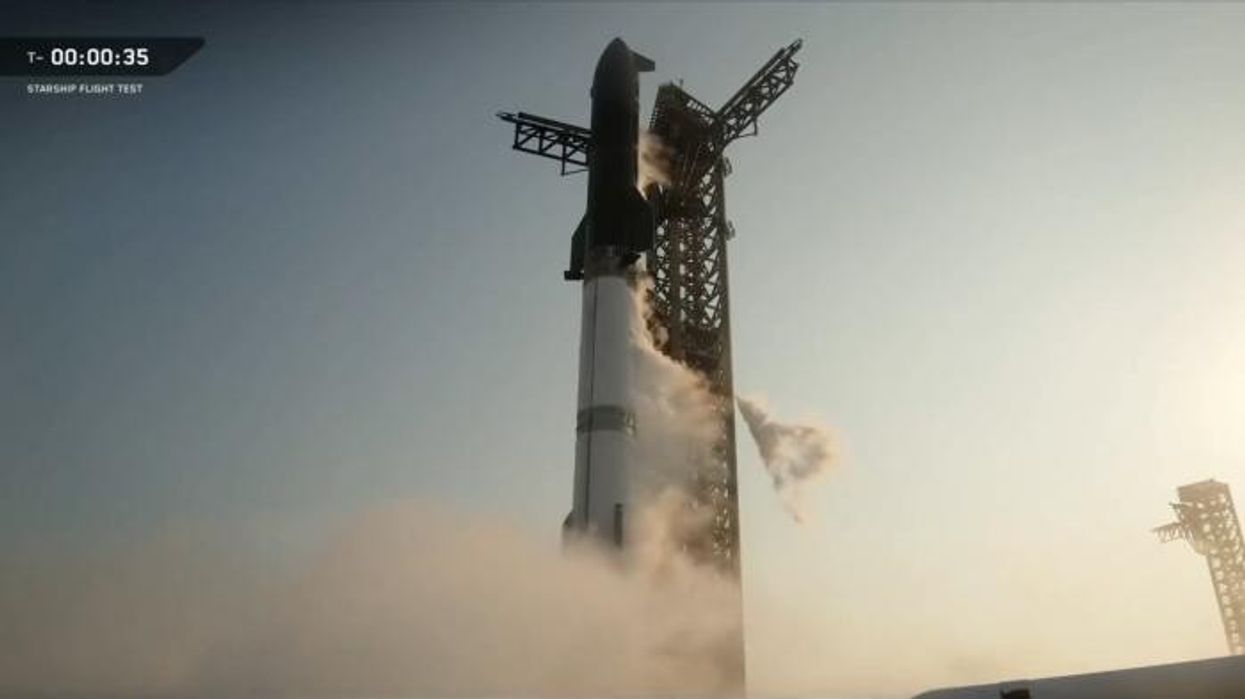Space breakthrough as scientists detect biggest ever merger of two huge black holes

Analysis showed the black holes were spinning approximately 400,000 times faster than Earth rotates
Don't Miss
Most Read
Astronomers have recorded gravitational waves from the largest ever black hole collision detected.
Two behemoths merged in a cataclysmic event 10 billion light years from Earth.
The cosmic giants, weighing 103 and 137 times the mass of our sun, spiralled together before slamming into one another in a merger that sent ripples through the fabric of space-time.
The collision created an even larger black hole in a distant corner of the universe, far beyond the edge of our Milky Way galaxy.
Scientists captured the event using ultra-sensitive detectors capable of measuring distortions in space-time thousands of times smaller than a proton's width.
The discovery has prompted physicists to reconsider their understanding of how such enormous black holes can form.
The gravitational wave signal reached Earth at just before 2pm UK time on 23 November 2023, triggering simultaneous responses at two American detectors in Washington and Louisiana operated by the Laser Interferometer Gravitational-wave Observatory (Ligo).
The detectors stretched and squeezed for a 10th of a second, capturing the "ringdown" phase as the newly merged black hole settled.
LATEST DEVELOPMENTS:

Astronomers have recorded gravitational waves from the most massive black hole collision ever detected, as two behemoths merged in a cataclysmic event 10 billion light years from Earth
|LIGO Laboratory/Reuters
Analysis showed the black holes were spinning approximately 400,000 times faster than Earth rotates, approaching the theoretical maximum for such objects.
Professor Mark Hannam, head of Cardiff University's Gravity Exploration Institute, said: "These are the most violent events we can observe in the universe, but when the signals reach Earth, they are the weakest phenomena we can measure."
"By the time these ripples wash up on Earth they are tiny."
Professor Hannam, a member of the Ligo scientific collaboration, noted the unusual nature of the discovery.

The first image of a different blackhole, Sgr A*, which is at the centre of our galaxy, published by NASA in 2022
|GETTY
He said: "These are the highest masses of black holes we've confidently measured with gravitational waves.
"And they're strange, because they are slap bang in the range of masses where, because of all kinds of weird things that happen, we don't expect black holes to form."
Typically, black holes emerge when massive stars exhaust their nuclear fuel and collapse at the end of their lives.
These extraordinarily dense objects distort space-time so severely that they create event horizons - boundaries beyond which nothing, not even light, can escape.

The findings come following another astronomy discovery where researchers found evidence of a 'bizarre interstellar object' that could be an alien spacecraft
| ATLAS/University of Hawaii/NASAThe detection challenges existing models about the upper limits of black hole formation through stellar collapse.
The findings come following another astronomy discovery where researchers found evidence of a "bizarre interstellar object" that could be an alien spacecraft.
The major space breakthrough, dubbed 3I/ATLAS, was spotted travelling from another star to our sun.
The object is too large to be natural, according to Professor Avi Loeb, a theoretical physicist and cosmologist from Harvard University, suggesting that 3I/ATLAS could be made by extraterrestrial life.











